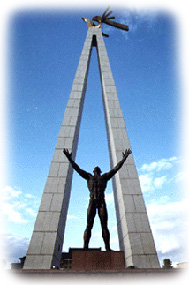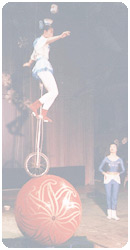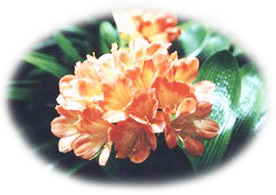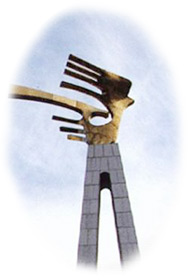History Changchun
 |
Changchun is a young city with a long history. There were human activities here as early as 70,000 years ago and the earliest primitive hordes inhabited the area some 7,000 years ago. |
It was the possession of the "Fuyuguo" kingdom and the Bohaiyuan Kingdom successively.The years under the reign of the Liao (907-1125) and Jin (1115-1234) dynasties are considered the most prosperous periods in the history of Changchun. The Prefecture of "Huanglongfu" was established in the area of Nongan and an ancient pagoda built in the Liao Dynasty still exists. In 18000, the court of the Qing Dynasty (1644-1911), established in today's Xinlicheng, the Changchun Ting-an administrative division at the sub-provincial level. In the period 1931-1945, Changchun was reduced to the capital of the puppet Manchukuo regime, called "Xinjing" -the new capital.
In October 1948, Changchun was liberated and designated as a special city. In 1954, it was made the capital of Jilin Province. In 1955, it became a municipality directly under the central government. In 1979, it was listed as one of the country's 15 central economic cities. In 1989, it was approved as one of the municipalities with independent budgetary status by the State Council. In 1992, it was designated as a key open city. In 1994, it was listed as a city enjoying sub-provincial status.
Changchun has a long history and a modernized civilization.
Geography Changchun
Changchun is the capital of Jilin Province, its political, economic and cultural center, and one of the first group of Top Tourist Cities of China.
Changchun is situated on the central Northeast China Plain. The area under its jurisdiction is encompassed by 124 degrees 18 minuted-127 degrees 02 minutes east longitude, and 43 degrees 05 minutes-45 degrees 15 minutes north latitude. The city covers an area of 20,571 square km, and has under its jurisdiction Chaoyang, Nan guan, Kuancheng, Erdao, Luyuan and Shuangyang, and Yushu, Jiutai and Dehui, the three cities at the county level and Nongan County, with a population of 6,838 million, including an urban population of 2.788 million. Changchun is rich in resources and has a developed economy. It is one of China's first group of 40 Cities with an Excellent Infrastructure for Investment. It as always enjoyed the reputation of being an "automobile city", "film city", "city of science and technology", "forest city" and "granary of north China". |
|
Climate Changchun
Changchun, a transitional area situated between the east humid mountainous region and the west dry plain, has a continental semi-humid monsoon climate of a temperate region. The winter is long, cold and dry, with an average temperature of -16.3 degrees centigrade in January and a snow depth up to 22 cm. The spring and autumn are short and the weather changes all the time. The summer is warm and humid. Its annual precipitation is in the range between 522 and 615 mm, with 60% falling in summer. The average temperature in July is 23 degrees centigrade. The four distinctive seasons make Changchun a pleasant city where visitors can enjoy beautiful sunshine in spring, green leaves in summer, fruits in autumn and ice and snow in winter.
Natural Ecological Environment Changchun
Changchun is located in the Northeast China Plain of the middle latitudes area of the North Hemisphere and east Eurasia. It is situated at the foot of mountains and by the side of streams, and most of the plain are tablelands. It has a continental semi-humid monsoon climate of a temperate region. Eight rivers, including the second Songhua River, Yinma River and Yitong River, flow across the city. It has more than 300 species of plants and 34 species of wild animals. It is a transition area from forest to plain. As its vast land teems with corn, it is called "golden corn belt".
Economy Changchun
Changchun is the economic center of Jilin Province and the country's important base for the production o f commodity grains, as well as a key industrial base. It has form ed a rationaleconomic structure with deep processing of agricultural products, automobile manufacturing and high technology as pillar industries, and with a coordinated development of industry, agriculture and tertiary industry and rational structure.
Changchun ranks first among provincial capitals in gross grain yield, per capita share of grains, volume of commodity grains and net volume of grain outflow.
The China No.1 Automobile Group Corp. and the Changchun Passenger train Manufacturing Factory are respectively the largest and most comprehensive automobile manufacturing, trading and research base in China, and the largest passenger and underground railway train manufacturing and research base.
The gross revenue from technology, industry and trade, and the GDP in high-tech and economic development zones rank 7th and 10th respectively among similar development zones in the country.
Tourism has been listed as the industry with the priority of development and been regarded and supported as a new point spearheading local economic growth. The Jingyue Pool Tourist Economic Development Zone, depending on the state-level Jingyue Pool park, has formed a comprehensive development area integrating tourism with holidaymaking, entertainment and health.
|
Culture Changchun
Changchun is an important city in terms of science, technology and culture in China. It has 27 full-time colleges and universities, 103 independent scientific research and technological development institutions, 15 state key and open laboratories, and 336,000 technological personnel in a wide range of fields. It ranks first in the country in the proportion of scientific and technological personnel in its population. It holds a safe lead in the study of optical electronics, precision instruments, laser technology, high polymer materials, bioengineering and automobile technology.
Changchun Film Studio is the cradle of the film undertaking of New
|
China and the country's largest and comprehensive film producing base. Changchun has hosted four national film festivals since 1992, making a positive contribution to the prosperity of the national film industry.
Ji Opera and Errenzhuan (a song-and-dance duet), are especially popular in Changchun. The melodious tune and lively forms are well received by local people and tourists. |
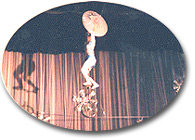 |
A Survey of Tourist Industry Changchun
Changchun has enjoyed a comparatively rapid development of its tourist industry in the 1990s and has formed a preliminary tourism system with a coordinated development of six factors related to food, accommodation, transport, sightseeing, shopping and entertainment. The functions of the city in tourism have become increasingly conspicuous.
The tourism economy has grown rapidly and the position of tourist industry has become more conspicuous. In 1998, Changchun received a total of 34,000 overseas and 6.8 million domestic tourists, 42 and 146 percent higher respectively than that at the beginning of the 1990s. Foreign exchange earnings stood at us$15 million, and domestictourist income at 1.2 billion yuan, six and 12 times higher than at the beginning of the 1990s. The number of people engaged in tourism-related businesses amounted to 15,352. Changchun has listed the tourist industry in the city's Ninth Five-Year Plan and the Prospective Long-Term Program to the Year 2010 and as one of its 10 key industries in economic and social development. In the city's development target for the tertiary sector, tourism has been given priority in development as a new point spearheading local economic growth.
Tourist attractions have begun to take shape and the varieties of tourist products have increased. The city has 23 scenic sites open to tourist and has initially formed a series of high-grade and varied tourist products. Among them, the Jingyue Pool, Changchun Film City, Kalun Lake Holiday Resort, Weihuang Palace, Nanhu Park and Shuangyang Tourist Area are taking shape, receiving more than 100,000 visitors annually. Jingyue Pool is a state-level scenic resort, a national forest park and a provincial-level holiday center.
The reception capability has strengthened and the quality of service has gradually improved. At the end of the 1980s, Changchun had only one star-rated hotel and four travel agencies. Currently, the city has 23 star-rated hotels, including two five-star, one four-star, 11 three-star, seven two-star and one one-star. It has 18 travel agencies, including 11 international ones and seven domestic ones. It has 22 restaurants and shops open to overseas tourists authorized by the tourist administration, and two tour coach companies to meet the needs of tourists.
Tourist transport has become more convenient and communications can meet current needs. Each day, some 51 pairs of trains start from or end at the new railway station of Changchun. International and domestic scheduled flights now number 36. Four expressways, with Changchun as the hub, have been completed and urban transport has formed a network. Changchun has opened direct telephone links with more than 400 domestic cities and more than 180 countries and regions.
Changchun's modern functions for tourism development have continuously been strengthened and tourist environment further improved. With the progress of building Changchun into a modernized international city and the further deepening of building it into one of China's top tourist cities, Changchun will become a standardized international city, a major tourist center of the Northeast and a distribution center of tourist. It will create a more beautiful and cleaner environment for tourists.
City Flower of Changchun
|
Kaffir lily is a potted flower loved by Changchun citizens. The flower is graceful, beautiful and evergreen, has a high ornamental value, and enjoys a high reputation both at home and abroad.
Changchun citizens like growing and admiring flowers, especially the kaffir lily. Its cultivation has a history of half a century. |
It is cultivated not only carefully by specialized departments, but also widely by common people. Over the past few years, new and improved varieties of kaffir lily have come out one after another. In 1986 Changchun's kaffir lily won the championship in the 19th flower exhibition of Hong Kong.
In October 1984, the kaffir lily was named the city flower of Changchun by the standing committee of the Changchun People's Congress.
Tourist Logo of Changchun
The tourist symbol of Changchun is composed of sculptures of a towering sunbird, a standing man and a woman lying on her side, reflecting the aspirations of Changchun citizens to pursue the harmonious co-existence of humanity and nature and to build a beautiful homeland. The sculpture shows that Changchun citizens welcome domestic and overseas tourists with a natural, historical and cultural landscape, and a beautiful environment.
|
|
|

